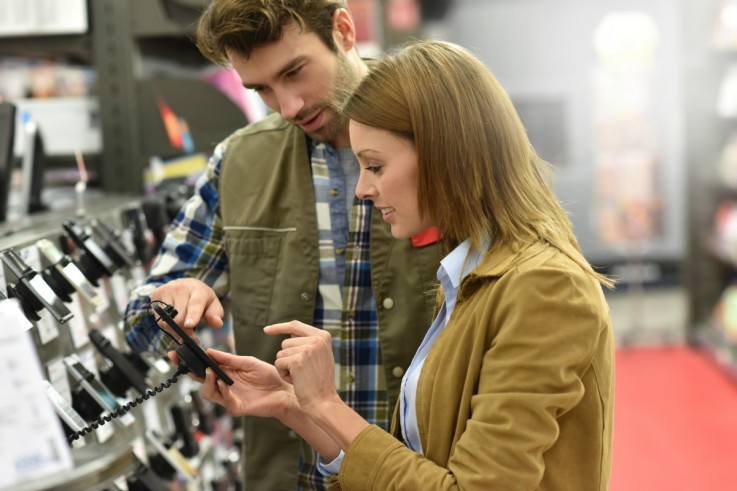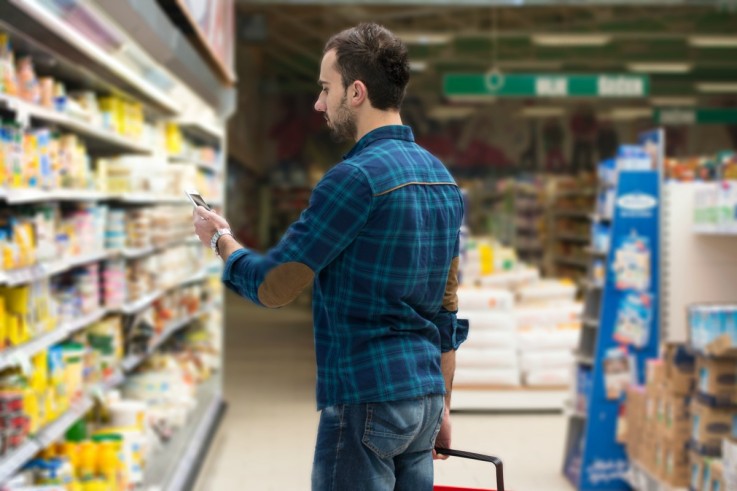Is emotion tracking the next big retail trend?

It seems we’re entering the age of emotion tracking. There’s been some activity in facial tracking and emotion recognition for a while. Particularly in advertising. But it’s never really been on a consumer level. Now though not one, but two, wearable emotion trackers are coming to market.
This year’s CES saw the debut of emotion tracker Feel. It claims to be ‘the first wristband that measures and tracks your emotions throughout the day.’ And this month has seen the launch of an Indiegogo campaign for Zenta, another wristband emotion tracker that also states it’s ‘the first emotion tracker that comes to market’.
Wearables are still finding their place in people’s lives, but retailers should be taking note of these new developments. Because if they can gain access to and understand customers’ emotions then it could change shopping as we know it.
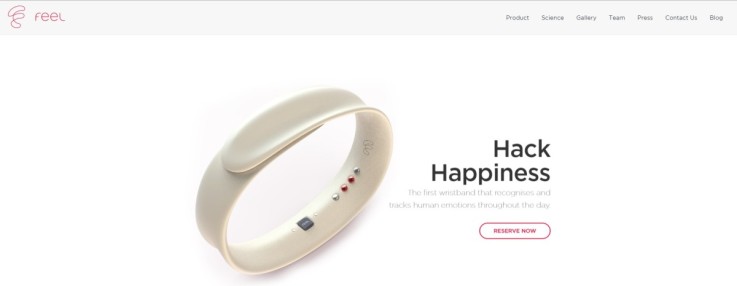
The technology
Created by Sentio Solutions, Feel is like a Fitbit for emotions. Integrated sensors measure and track the wearer’s biosignals, such as blood volume pulse and skin temperature. This information is sent by Bluetooth to a connected device. The accompanying app then displays the results, so wearers can see how their mood is affected by what they do and the environments they’re in.
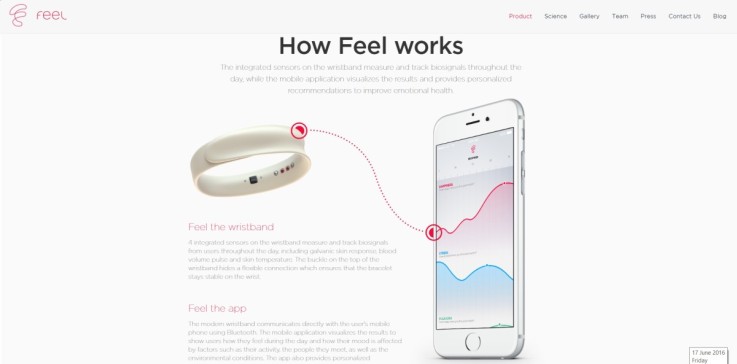
The app also uses the data to suggest ways to improve emotional health. These can be short-term, such as ‘be active’ or ‘meditate’. But it also offers long-term strategies to improve wellbeing. Feel can even alert wearers to stressful emotions and offer breathing and meditation exercises to help ease them. The product was first announced late last year, with the first prototype revealed at CES in January. Available to pre-order now, it’s expected that Feel will start to ship at the end of this year.
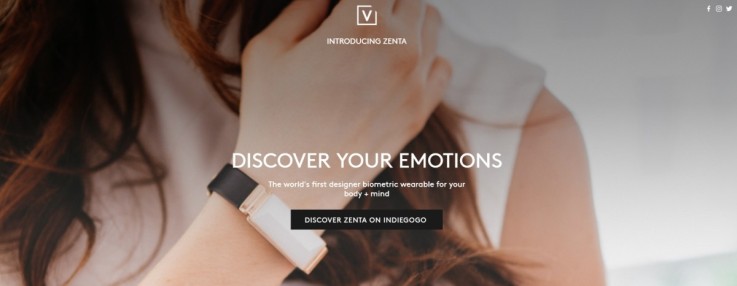
Zenta has also been in development since late 2015. It’s the second wearable product from Vinaya following on from smart jewellery system Altruis. Following some prototype development work, Vinaya launched an Indiegogo funding campaign for Zenta this month. It exceeded its goal of $100k in just 41 hours. The beta version is expected to be released in January 2017, with main production starting from April the same year.
Unlike Feel though, Zenta collects a host of physical and emotional data. This includes the typical measurements tracked by wearables, such as activity and sleep quality. It means customers don’t have to have two devices to get a full picture of their wellbeing. Contactless payment, smartphone notifications and integration with over 70 other apps are also part of the mix.
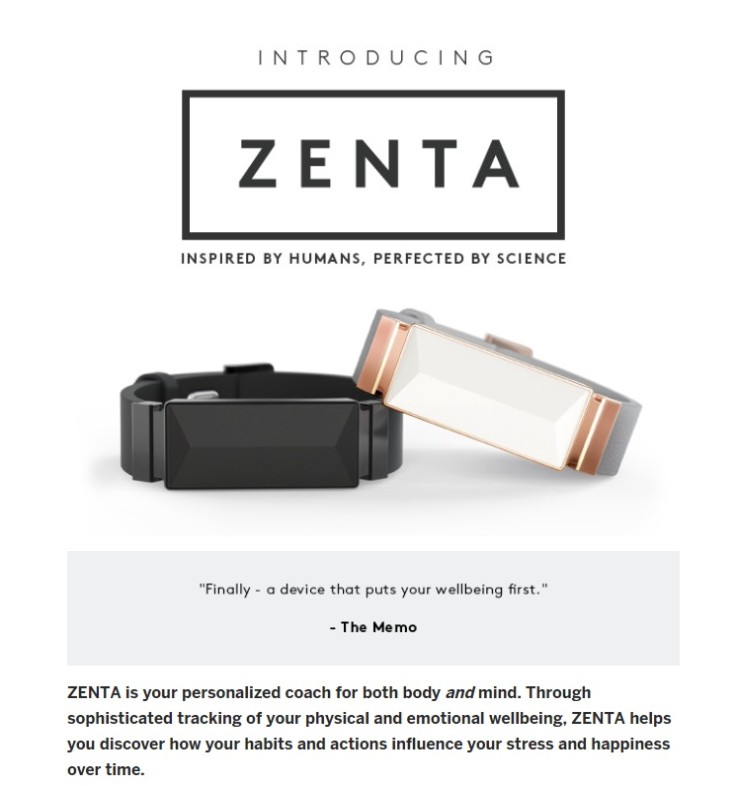
Emotion tracking is via the built in biometric sensors that check heart rate, temperature, respiration and perspiration rates. These measure stress, happiness and moods, and feed back to the user via the Zenta app. A machine-learning algorithm helps Zenta build up an emotional profile for the customer.
What this means for retail
Imagine if retailers had access to emotional data for every customer. How could they respond? If a customer entered the store feeling stressed, it could be that they are in a hurry or need something urgently. The retailer could recognise that emotion and send an assistant over to help them get what they need quickly. If a customer came in feeling sad, the retailer could send them a personalised offer to try and lift their mood. If a customer is tired they could open up another till or send an assistant over with a mobile POS system to stop them waiting around in-store. And if a customer is already happy it could be the perfect time to show them a new product they might like.
Or it might be that a retailer can recognise how a customer’s mood changes as they travel around the store. If they become annoyed when looking at a certain item it could be that it’s not in their size. This presents an opportunity for the retailer to send an assistant over who could offer to order the item in or transfer it from another store. Or the retailer could send an email to the customer enabling them to order that item online.
This also works if the customer grows happy in certain parts of the store. Retailers can pinpoint the products that lifted their mood and suggest other items they might like. It could provide insights into the ranges that people want to see and those they don’t.
Or it may be able to show retailers what works when it comes to store design. What are customers responding to – whether in a good or bad way? And it could help them know exactly when pressure points such as queuing start to impact on customer moods. How long a wait is too long?
Within a shopping centre or area with lots of stores, retailers could use emotion tracking to direct customers towards them. For example, if the customer seems to be tired a nearby coffee chain could ping them an offer or remind them they have their favourite product available.
Accessing the data
Of course having access to the data is one thing. Customers would need to choose to share the data with retailers. But if Zenta can integrate with other apps then in theory customers could choose to link a brand or store app with their emotion tracking device. The highly personal nature of data is one barrier to sharing it. Customers would need to see an extremely strong benefit in doing so.
Likewise, the thing missing from emotion tracking is context. If a customer has just experienced a personal tragedy it’s probably not the time to target them with sales adverts. Context is key to understanding why customers feel the way they do at any particular time. Getting that context is some way off still. But the more our lives connect digitally the more it could be on the horizon.
And emotion tracking isn’t just tied to wearables. As mentioned, facial recognition is an area that has been connected to emotion tracking for some time. And just this year Apple bought Emotient, an AI start-up that reads emotions by analysing facial expressions, showing even tech giants are looking at the space. This area could lead into analysing body language as well.
It could easily be incorporated into in-store mirrors and digital displays to let retailers track how customers respond to what they see. In turn this could help retailers change their adverts to resonate with certain groups of customers.
There could even be scope for retailers to provide in-store emotion trackers that customers can wear while they shop. They could then analyse the data and help guide customers on their purchases. For example, when clothes shopping they could see which colours or styles made the customer happier.
With so many potential applications, emotion tracking could be a key element of future retailing. After all, the role they already play in many purchases shouldn’t be ignored. And it may not be that long before retailers can harness them as well.
Make sure you’re ready for the next generation of omnichannel with our latest insights. You can also find out more about the latest trends in retail by taking part in one of our London retail safaris.

